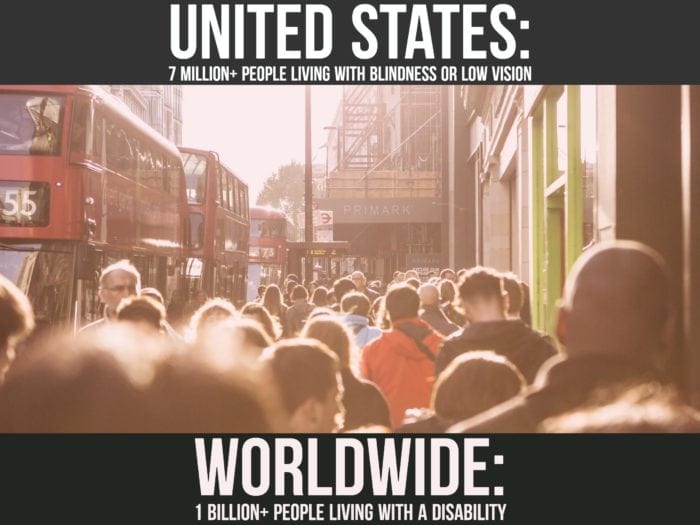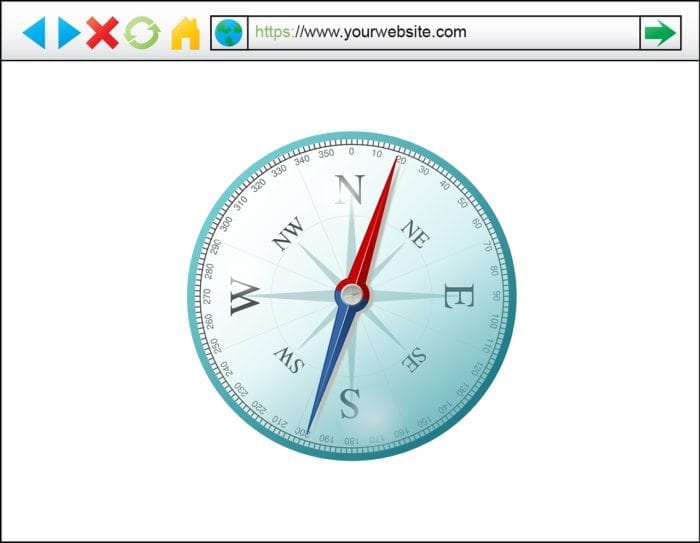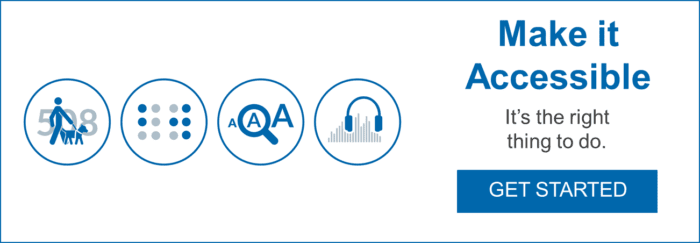Understanding How to Include Customers with Visual Impairments
Published onAn Introduction to Welcoming Everyone in Your Business
Many companies give little thought to addressing the needs of their customers with visual impairments. It’s more important than you may think. According to the Centers for Disease Control Prevention (CDC) there may be as many as 57 million people with one or more disabilities right here in the United States. That’s nearly 20% of our population! From a purely selfish perspective; this is a market segment that controls billions of dollars annually. Addressing their needs actually serves your business.
Many businesses see accessibility as “the cost of ramps and rails”. In other words, simply a cost center with no redeeming value to the bottom line. What they fail to realize is that by excluding one market segment, they tend to overlook many more. They become so focused on what they consider their target market, that they let dollars walk away and never even notice.
Some estimates place the number of people with a visual impairment or blindness as high as 7.5 million in the United States alone. In addition, statistics show that here in the U.S., 10,000 people turn 65 years of age every single day; 7 days a week; 365 days a year. This is the fastest growing market segment in the U.S. Many of these people have at least one form of visual impairment and would benefit from accessible documents in large print, audio, braille or accessible PDF.
Putting Yourself in Their Place
So, how do we include those customers with visual impairments or blindness? The first step is to take a look at how you interact with your customers today. This may sound trite, but try putting yourself in their place.
On your computer or mobile device, turn on accessibility.
Now, go to your website; put your mouse in a drawer; turn off the display/monitor and see if you can navigate through your site.
- Are you able to find the information you need to make a buying decision?
- Are you able to read the PDF documents you have for download; in other words, are they accessible?
- Have they been remediated to the WGAC 2.0 AA standard?
There are many old adages that apply – before you criticize walk a mile in their shoes – spend at least one night in your own guest room, etc. The lesson being you must understand a person’s experiences, challenges, thought processes, etc. Using just the accessibility tools, were you able to navigate your site?
Two Areas that Effect Customers with Visual Impairments the Most
Inadequate Website Layout:
Those amazing graphics you created for your site . . . how effective are they to a person who cannot see? It’s not that you eliminate those graphics; you need to design ways to communicate the message in text as well. Use of alternate text that describes the image in a succinct manner is very effective. Think of it as a caption. Be careful to check the accuracy of your alt tags just as carefully as you check the other content on your site.
It’s important to incorporate accessibility protocols when designing your Website. On a side note; if your developer says, “what do you mean accessibility?” or tells you it’s not important, find another developer with experience in accessibility.
Overuse of reCAPTCHA:
In an effort to block hackers and spammers, reCAPTCHA has become very popular. This is important but when it’s overused or inappropriately placed it can also end up being a barrier to customers with a visual impairment. To make sure you’re keeping the door open to all of your customers, you can setup an audio alternative or other non-visual elements. If it’s not properly configured; this process actually blocks those with visual impairments.
Keep in mind that this type of barrier may be considered unethical and is possibly illegal. It violates Section 508.2 of the United States Workforce Rehabilitation Act of 1973. Many of the available alternatives to reCAPTCHA can be difficult to use so consider testing the process using the accessibility features of your computer or mobile device.
Some good news is that Google is changing the game when it comes to reCAPTCHA. On March 13, 2017 Google published a press release about the sweeping changes they are bringing to reCAPTCHA. The new system does away with questions completely. Instead, it tracks your behavior from the moment you click on a link and uses a machine-learning algorithm to sort out normal human browsing behavior from bots. This’ll most likely be a welcomed change within the visually impaired community.
Accessibility Means More than Ramps and Rails
As we mentioned, accessibility is so much more than ramps and rails. We detailed some of this in an earlier post entitled “ADA Compliance in Banking; Beyond the Wheelchair and Brailled ATMs”. Every day we speak with business people seeking to reach their customers through accessible documents and accessible information. In these conversations we often hear the comment “I had no idea there was so much to this!”
If you’re not exposed to the challenges faced by those with a visual impairment or blindness, it’s very hard to imagine what it’s like to be denied the information you need on a daily basis. Financial information, health information, insurance information, federal notices and statement information and more. It’s the kind of thing most people and businesses take for granted.
Don’t allow such a significant consumer base to pass you by. Take the steps to provide information through your web site and through accessible documents.
At Braille Works, we are truly “Making the World a More Readable Place” by providing accessible documents and information to people who would not have access to it otherwise.
Make it Accessible for Your Customers with Visual Impairments
Now that you know more about accessibility in general and the positive effects it has on your customers who are visually impaired, it’s time to get your company on board with the accessibility movement that’s sweeping the country. We’d love to help your brand stay ahead of the curve. We work with businesses everyday to help them create an inclusive atmosphere and we can do the same for you!
Give us a call at 1-800-258-7544 or upload your documents to our website today and receive a quote within 48 hours.
Related Articles
- Why Accessibility Matters
- Beginner’s Guide to Business Accessibility
- The Wild West of Section 508 Compliance
- Make it Accessible- An Appeal to the Business World
- Can Automated Web Accessibility Programs Accurately Determine ADA and 508 Compliance?
- 10 Tips to Make Your Bank More Accessible
- [Free] Document Accessibility Review for Bankers
- Things We Wish Restaurants Knew About Serving Guests With Blindness
Categorized in: Accessibility, Banking, Government, Health and Wellness, Informational, Restaurants
This post was written by







Comments are closed here.